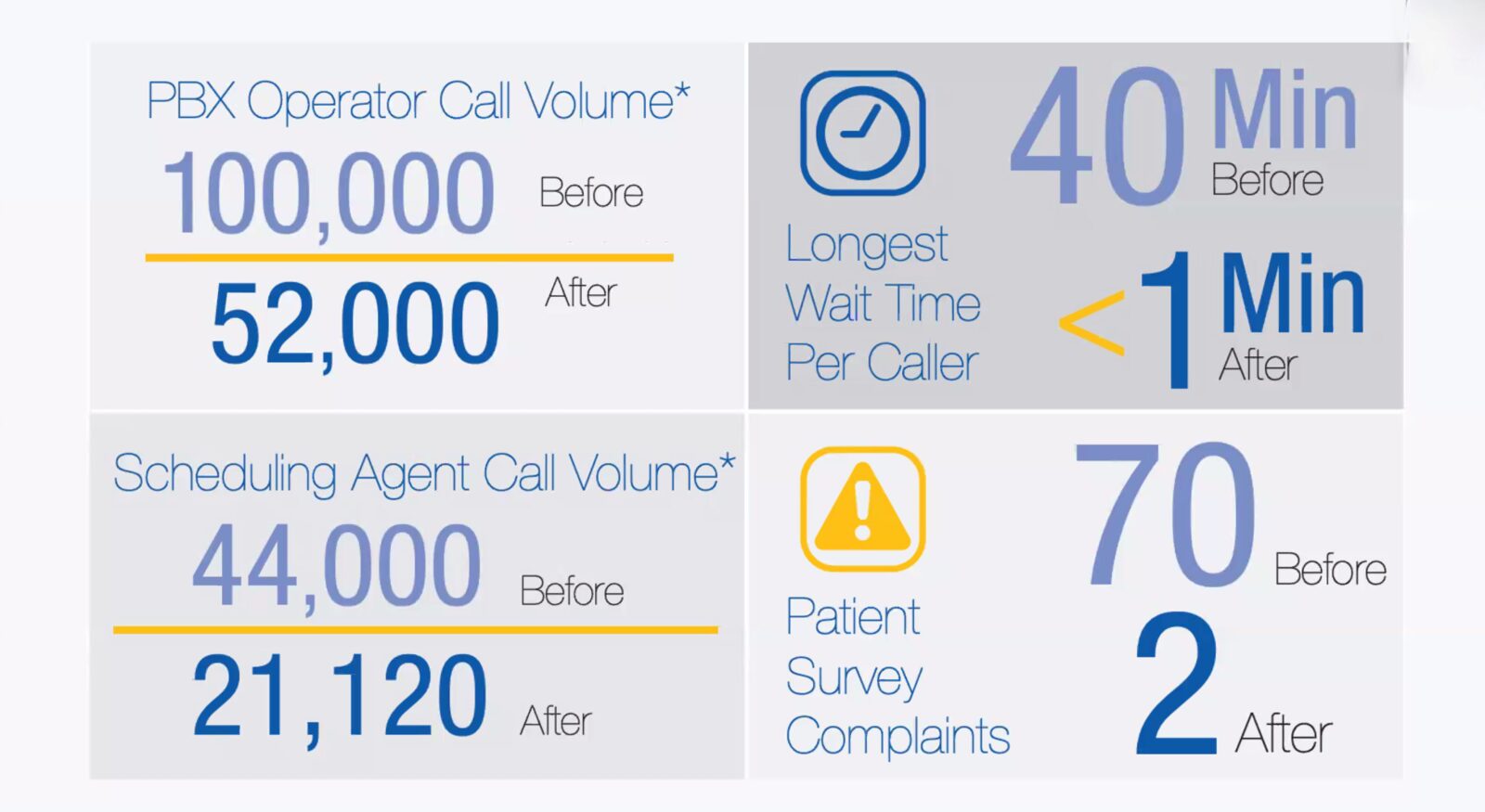Not long ago, a large U.S. healthcare provider was faced with a dilemma: How to improve its patient access strategy with limited financial resources. Like many organizations around the world, the provider needed to address sharply higher call volumes and rising demand for digital services, as well as escalating costs in the contact center without making a major investment to improve the customer experience (CX).
“After identifying the pain points, the provider was able to make relatively minor adjustments to technology and processes,” said Chanley Geveshausen, vice president, CX consulting for Waterfield Tech, an Avaya partner. “The result was a dramatic improvement in CX, while driving costs out of the contact center.”
Geveshausen said the organization’s first step was conducting an impact analysis. That led the provider to focus on improving three areas related to the customer experience: PBX operator call volume, procedure scheduling, and appointment scheduling.
After implementing AI-assisted self-service models, along with other process improvements, the healthcare provider was able to reduce operator call volume nearly in half, from 100,000 to 52,000 calls, resulting in a net financial gain of $2.1 million over five years. Even better from a CX perspective, the longest wait time per caller dropped from 40 minutes to less than one minute. Not surprisingly, patient survey complaints dropped from 70 to two.
“This is a great example of how proven methodologies can benefit organizations without huge investments,” said Geveshausen in a recent Waterfield Tech webinar, “How to Optimize Your CX in a Zero-Budget Year.” He added that the cost of human resources today is unpredictable, making it important for organizations to identify cost-saving opportunities through automation and workforce optimization.
An impact analysis
Assessing the contact center from the dual perspectives of CX improvement and cost savings takes time away from day-to-day operations, said Geveshausen. “But there are opportunities to embrace changes that enable digital transformation and AI-boosted automation,” he added. “Sometimes an outside perspective can bring to light what you are not seeing in your business.”
Geveshausen said a full impact CX and cost analysis should cover the following areas:
• Carrier relationships – can they be consolidated?
• Data network status – are there cost-saving opportunities?
• Remote workers – devices, applications and security
• Inbound voice operations – including agent support technology
• Callback applications
• Proactive outreach applications
• Knowledge management
• Omnichannel processes – such as chat, email, SMS, and social media
• Chatbots – for assisting a customer’s journey
• IVR – is it optimized for today’s callers?
• Conversational AI – where can these applications create value?
• Fraud identification
• Biometrics
• Computer telephony integration
• Reporting analytics – another area where AI can assist
“We have moved well past the time when an agent simply took one caller after another,” Geveshausen said. “Now customers are interacting on many channels, including video sessions in fields like telehealth and financial services. But you still need to consider the financial impact as well. Big projects are more expensive and take longer, so it makes sense to consider incremental steps to optimize your CX investments.”

